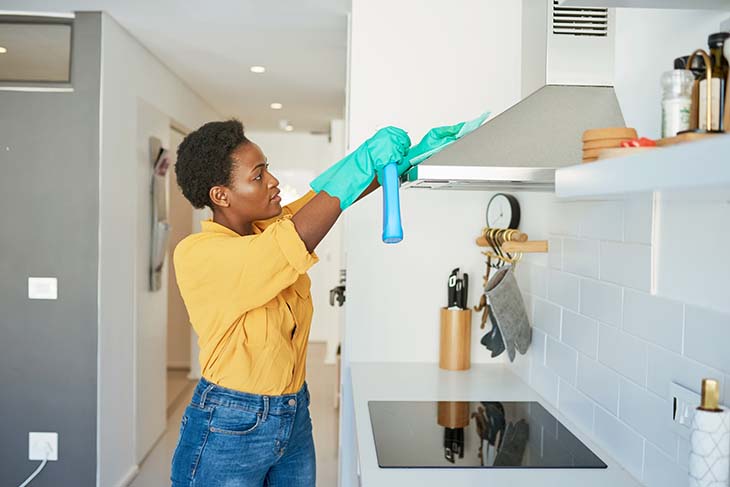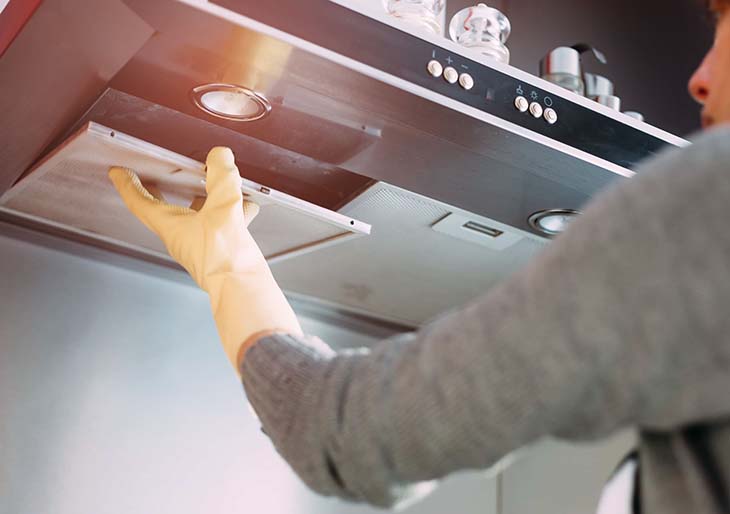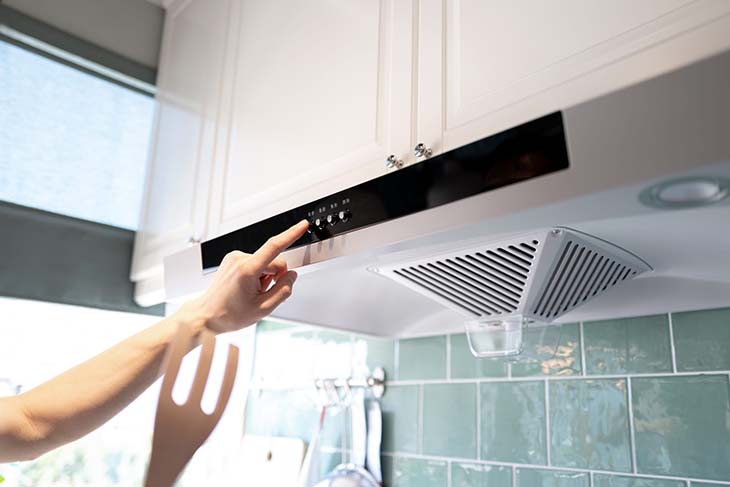
The kitchen is one of the main rooms of the house where we usually spend a lot of time. It’s where you keep all your food, where you prepare delicious meals, and maybe even where you eat your family meals. For all these reasons it is essential to clean it thoroughly to always keep it clean. Among the elements to be maintained regularly and correctly, we find the hood. It is one of the most used appliances for absorbing cooking vapors, but it is also necessarily one of the dirtiest. Here are some practical tips to simplify maintenance.
If cleaning the hood is essential for good functioning, this does not mean that it is not particularly laborious. In fact, it is difficult to access some parts of the hood where grease splashes encrust. If you have a stainless steel model, baking soda can be a great help. Discover some natural methods to effectively clean your hood from the inside.

How to clean the stainless steel hood outside?
To clean the outside of your stainless steel hood, follow these instructions:
Unplug or turn off the hood so it does not short out or run during maintenance.
Please note that cleaning will depend on the material the hood was made from. In the case of stainless steel, for example, it is advisable to apply a specific product dedicated to it. Rub in one direction only to avoid streaks or marks, removing any shine.
To clean the hood control and its elements (buttons and display, if present), avoid using liquids that could be damaged by humidity. A dry or slightly damp cloth will be enough to make them flawless.

How to clean the inside of the hood?
It is very important to know how to remove internal fat that has settled in the internal fat hood, since it is a very delicate operation. Of course, it is difficult to access all the parts that make up the device, but there are methods that will make this internal cleaning easier for you.
With a degreaser
Range hood cleaners typically include specific degreasers for cleaning stainless steel or similar kitchen materials.
Here are some steps to follow to the letter to clean the hood correctly:
- Spray the inside with degreaser.
- Wait a few minutes for it to take effect (the product label will tell you how long it takes) and when the dirt has softened thanks to the product, use a clean cloth to wipe away all the dirt.
- Repeat the process several times until you find that the inside of the cap is spotless.
With sodium bicarbonate
Using this powerful degreaser and disinfectant is another very smart tip for cleaning your hood. However, arm yourself with patience and good will, because this method requires more time than the first. But you will be really satisfied with its effectiveness.
Here’s how to properly clean your hood with baking soda:
- Place two saucepans full of water and baking soda on the heat.
- Turn on the heat so that the pots start to boil. At the same time, turn on the hood.
- The hood will absorb the steam from the pans, slowly melting the grease accumulated inside.
- Keep the pans on the stove for at least an hour for the method to really work. If there is very little water left, you can add more water and baking soda, as you will need to be careful that the pan doesn’t run out so it doesn’t burn.
- Protect the baking tray with paper towels so that it absorbs any fat that may melt in the hood.
- Turn off the heat and clean the hood with a rag inside.
- Finally, you can wipe with a damp cloth with just water or white vinegar to remove any dirt and leave the area clean.

How often should the hood be cleaned?
A tip: we advise you to clean the hood immediately after cooking. This way, you will perform daily maintenance and save a lot of effort when tackling deep cleaning. Precisely, for the latter, it is recommended to carry it out every two months. If you do daily maintenance, it will be much easier for you.
For this thorough cleaning, don’t forget to disassemble the filters and clean the surfaces well, both inside and outside, before reassembling them.